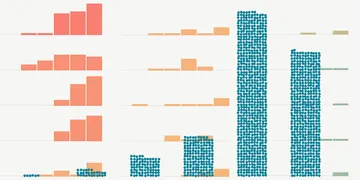For years, Cuyahoga County has offered little help to people before releasing them from one of the worst jails in Ohio.
That will end next month.
A revamped reentry program to assist people as they leave the jail is being finalized by Cuyahoga County Sheriff Harold Pretel and other top leaders. The program will connect people with basic needs, including housing, employment, health care and other services.
The change comes a year after The Marshall Project - Cleveland detailed how the sheriff’s department offered no reentry assistance to men and women before they left the jail.
“This is a step in the right direction,” said Evan O’Reilly, a spokesperson for the Cuyahoga County Jail Coalition, a group advocating for change in the county justice system.
“Cutting people loose with no assistance is not good.”
The move for enhanced reentry services has spread across the state since Ohio Supreme Court Chief Justice Sharon L. Kennedy formed the Supreme Court of Ohio Reentry Task Force in April 2023.
In September, the task force released a 140-page report with more than a dozen recommendations, concluding that “reentry programs are essential to help returning citizens become productive members of society.”
Counties like Lorain and Franklin — which includes the state capital of Columbus — have reentry offices designed to connect people to providers for key services that include health care, transportation and housing. The assistance is offered before a person’s release.
County sheriffs across Ohio have offered reentry services for years, and many advocates believe such programs help decrease the likelihood of repeat offenses.
The Cuyahoga County Jail, one of the state’s largest, with about 1,600 individuals housed each day, has been mired for years with numerous deaths and reports of inhumane conditions in the decrepit facility.
News 5 has chronicled the problems of “abuse, suicides, lawsuits, accidental releases, and leadership issues” over the years.
Pretel, who has been sheriff for about 18 months, said the department’s responsibility extends beyond public safety.
“We also must prepare the people in our custody for a successful return to their communities, helping them become better neighbors and family members,” Pretel said in a statement.
“By working closely with the Office of Reentry, our new (reentry) program will provide people with the tools and resources to rebuild their lives and find stable employment, secure affordable housing and access other essential services.”
After reading The Marshall Project - Cleveland article, Pretel said he and other top deputies toured numerous jails in Ohio, Indiana and Tennessee to learn about how the facilities offer reentry services.
The county plans to build a new jail in Garfield Heights, and Pretel and other top officials said reentry services will be incorporated into the facility’s design to ensure the program’s permanency.
Cuyahoga County doesn’t have reentry workers in the jail, but it does operate an Office of Reentry located on Fulton Parkway — about six miles from the county jail in downtown Cleveland.
The office doesn’t conduct outreach or meet directly with people leaving jail. It functions as a funding source for community groups, which offer help to people leaving the jail.
Two of the office’s eight staffers are being trained by the state to work as “reentry resource navigators” by the end of December, said Simeon Best, director of the Office of Reentry.
Initially, the reentry services in the jail will focus on two groups: people nearing the end of their sentence and those who frequently cycle through the jail doors, Best said. They will also focus on getting military veterans connected to services.
The tours at other jails helped inform Cuyahoga County on how it approaches reentry services, Best said. Officials learned that every person has a different reentry need, he said.
“Some people are not going to even want help,” Best said. “This isn't simple like 1, 2, 3. It's going to take a lot of time and effort.”
Laurel Diaz, the county’s justice and health equity officer, said the jail houses hundreds of repeat offenders.
About 300 people have been booked into the jail at least eight times each in the past three years, she said. These individuals have a higher percentage of substance abuse and mental health disorders, Diaz said.
“Together, our goal is to break the cycle of recidivism, create pathways to success and address the root issues that often lead to re-incarceration,” Pretel’s statement said.
With an absence of reentry services, Cuyahoga County’s Office of Public Defender has worked to fill the void by collecting donations to provide basic needs such as hygiene products and clothing.
The office has also printed fliers with information about housing, mental health, substance abuse and other resources for anyone passing through the release desk at the jail. Two other groups are now passing out bus passes and Narcan kits to help prevent overdose deaths.
Ashley Stebbins, the county’s deputy chief public defender, said a gap has long existed in providing reentry services for those struggling with basic needs.
“We hope that we can work with them as they get into place over the next few weeks and months,” Stebbins said.
